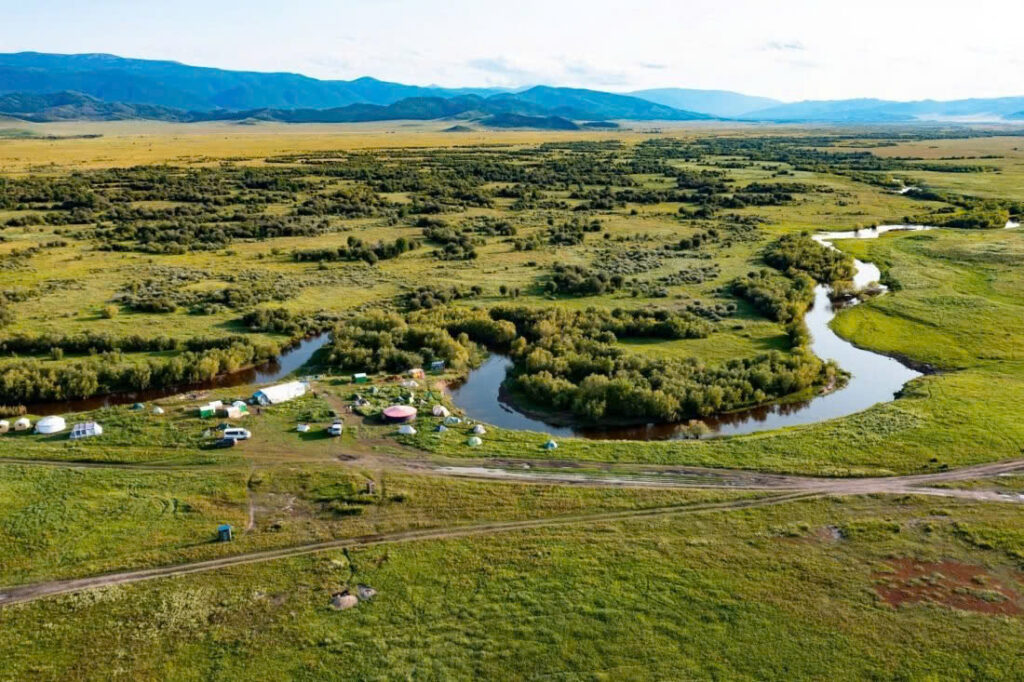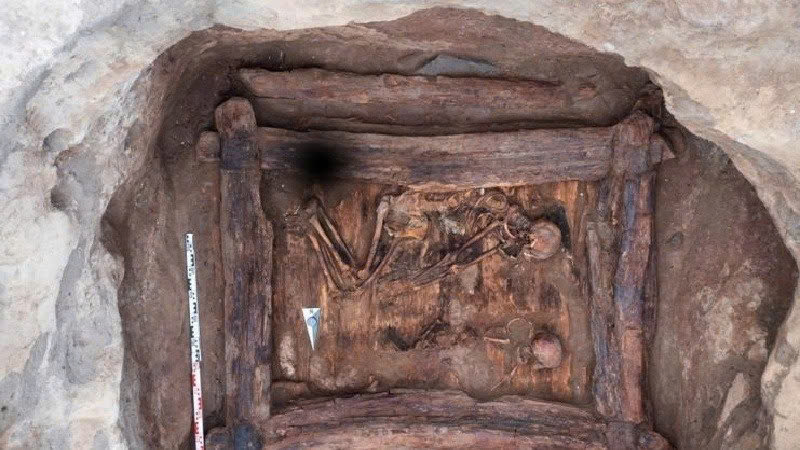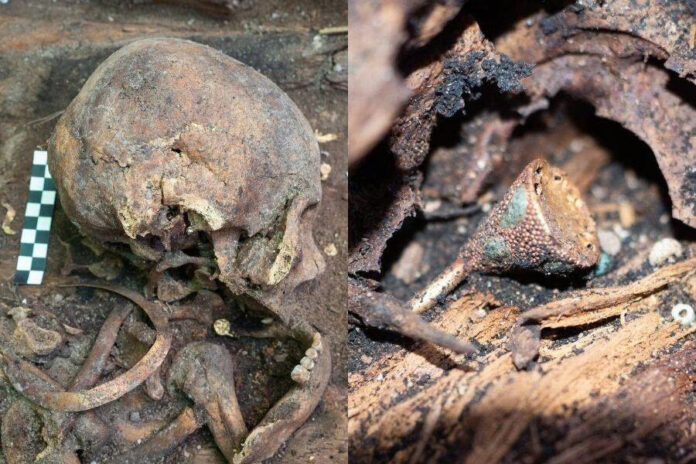Polish-Russian Team Uncovers 2,500-Year-Old Burial Mound

Archaeologists have uncovered an extraordinary find in the Touran-Uyuk Valley of northern Tuva, Russia, commonly known as the ‘Siberian Valley of the Kings.’ A collaborative Polish-Russian team has excavated a large burial mound dating back around 2,500 years, unveiling the remains of a woman interred with a stunning collection of valuable artifacts.
Unexpected Findings Challenge Traditional Assumptions
The excavation, led by researchers from the Jagiellonian University in Kraków, uncovered the skeleton of a woman estimated to be around 50 years old at the time of her death. What makes this discovery particularly intriguing is the presence of a golden pectoral ornament in the shape of a crescent or sickle found with her remains.

Dr. Łukasz Oleszczak, a member of the research team, emphasized the significance of this find:
“A particularly interesting artifact was a golden pectoral ornament, a decoration hung at the neck in the shape of a sickle or crescent. Such objects were almost exclusively discovered in the graves of men and were considered symbols of belonging to a social group, caste, perhaps warriors. Its presence in the grave of a woman is a very interesting deviation from this custom and certainly confirms the unique role of the deceased in the community of the Valley of the Kings.”
Rich Burial Site Yields Multiple Graves and Treasures

The burial mound, measuring approximately 25 meters in diameter, contained not only the woman’s remains but also those of a toddler aged 2-3 years. Additionally, the archaeologists discovered:
- Bronze mirrors
- Gold earrings
- An iron knife
- A well-preserved decorated wooden comb
In total, the ancient tomb held the remains of five individuals, all buried with a treasure trove of grave goods.
Advanced Technology Aids Archaeological Breakthroughs
The team’s success was partly due to their use of “aerial laser scanning” technology, which helped them detect two graves at the site in 2021. This discovery highlights the potential of modern technology in advancing archaeological research.
Historical Context: The Scythian Legacy

The burial mound is linked to the Scythians, nomadic tribes that roamed the steppes between the Black Sea and China from approximately 800 B.C. to A.D. 300. Dating back to the 6th century BCE, the woman’s burial offers valuable insights into Scythian culture and social hierarchies.
Dr. Oleszczak emphasized her notable status, stating, “It appears that, like others interred in this mound, she was part of the prince’s entourage.”
This remarkable discovery not only illuminates ancient burial customs but also challenges existing perceptions of gender roles within Scythian society, paving the way for new research and interpretations of this intriguing historical period.

